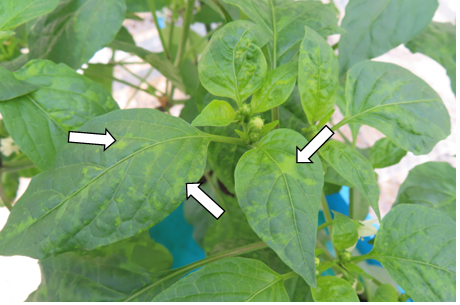The tomato brown rugose fruit virus (ToBRFV) can cause great damage to tomatoes. The National Agriculture and Food Research Organization (NARO) has revealed for the first time in the world that not only seeds of tomato but also seeds of bell peppers can transmit ToBRFV. It is also demonstrated that ToBRFV accumulates in the seed coats of tomatoes and bell peppers. This result highlights the importance of strict quarantine measures to prevent ToBRFV invasion via seeds and may lead to improvements in testing technology by identifying the infection site. It is expected that this will help improve seed testing technology in the future and reduce the risk of virus invasion that have not yet reported in Japan.
Overview
Tomato brown rugose fruit virus (ToBRFV) can cause severe damages in tomatoes resulting in poor growth and abnormal fruit development. Its outbreak was first confirmed in Israel in 2014. ToBRFV spreads rapidly within fields and inhibits the growth of infected tomatoes thereby lowering the yield. ToBRFV is designated as quarantine pest by the Regulation for Enforcement of the Plant Protection Act by Ministry of Agriculture, Forestry and Fisheries (MAFF). As of January 2024, no cases have been reported in Japan. However, the outbreak has already spread rapidly to more than 30 countries. The production sites and the seed industry around the world are on alert for the invasion and spread of the virus. It is speculated that the rapid and worldwide spread of this virus is mainly due to the distribution of seeds contaminated with ToBRFV.
In addition to tomatoes, ToBRFV infects bell peppers and chili peppers, causing leaf mosaic symptoms and fruit deformities, resulting in reduced yields(Fig. 1). It has been reported that this virus is seed-transmitted in tomatoes, but the mode of seed transmission in bell peppers had not been clarified. NARO demonstrated that ToBRFV is seed-transmitted not only in tomatoes but also in bell peppers(Table 1), suggesting that the global distribution of infected seeds would have contributed to the spread of ToBRFV worldwide.
To clarify the mechanism of seed transmission, tests using tomatoes showed that ToBRFV may invade the integument (the tissue that becomes the seed coat of the seed) of the ovule when the ovule develops into a seed after pollination(Fig. 2), causing infection of the seed coat. Furthermore, part of the seed transmission mechanism was elucidated for the first time in tomatoes and bell peppers, in which ToBRFV accumulated inside the seed coat invades the seedling through the seed coat during germination.
This result demonstrates the importance of strict seed quarantine to prevent ToBRFV from entering Japan and spreading worldwide. It is also expected to reduce the risk of the virus invasion into Japan, thereby contributing to distribution of healthy seeds worldwide. In addition, by identifying the infection site in seeds, this result will lead to improvements in seed inspection technology in the future.

Fig. 1 Mosaic symptoms (marked by arrows) in leaves of ToBRFV-infected bell pepper
Budget
Ministry of Agriculture, Forestry and Fisheries of Japan, JP J008617. 20320466
Relevant Information


Fig. 2 Distribution of ToBRFV in infected tomato plants during the seed development
Purple staining of tissues indicates infection with ToBRFV. Arrows indicate ToBRFV infection in vascular tissues. (A-F) Tomato plants infected with ToBRFV. (G) Healthy tomato plant at a flower opening stage as a negative control. (A) Shoot apex. (B-E) developing flower buds. (F) Early-developing fruit. ca, carpel; fp, floral primordium; in, integument; ov, ovule; ow, ovary wall; pe, petal; pl, placenta; re, receptacle; se, sepal; st, stamen. Bars indicate 100 μm in A-C and 200 μm in D-G.
(Reprinted with permission from Matsushita et al. (2024) Journal of General Plant Pathology 90, 23-34.)
Publication
Yosuke Matsushita, Sawana Takeyama, Yasuhiro Tomitaka, Momoko Matsuyama, Kazuhiro Ishibashi, Hibiki Shinosaka, Kohei Osaki, Kenji Kubota (2024) Elucidating the nature of seed-borne transmission of tomato brown rugose fruit virus in tomato, bell pepper, and eggplant. Journal of General Plant Pathology. 90, 23-34. https://doi.org/10.1007/s10327-023-01159-9




